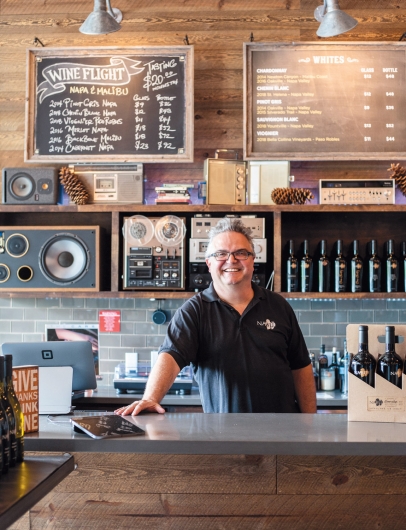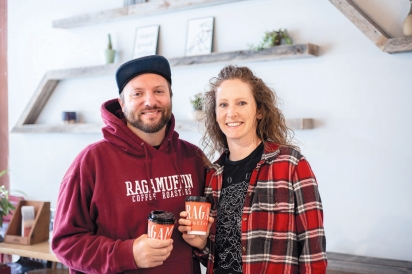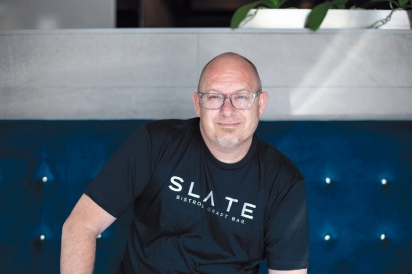Dining in the Age of the ‘Rona
The practical reality, without the noise of media, politics and everybody and their aunt with an opinion, is that the novel coronavirus is in the world and it’s not going to go away any time soon.
But restaurateurs, along with other small-business owners, have to learn to manage what’s happening on the ground now.
Restaurants that survived the lockdown across the country have slowly begun to reopen with patio dining and social distancing as the new norms. Like so many experiments, they’re learning as they go and making adjustments that they hope just might carry them through and beyond this hard time.
LA DOLCE VITA
“It’s a whole new ball game,” says Michelle Kenney, owner and chef of La Dolce Vita in Heritage Square, Oxnard. “We have unpredictable traffic for takeout. We’re not on the main drag anyway and that makes it harder.”
La Dolce Vita is in the fine-dining category, which Kenney admits makes the future less clear. But a contract with World Central Kitchen and a program that has been feeding seniors in Oxnard has been helping to pay the bills. Through the first part of May, La Dolce Vita was delivering meals for health care staff members three days a week.
“The ability to continue to make food and sell it, albeit at about $10 a plate, was welcomed.” Still, Kenney has had to furlough staff members, cut some corners, refigure supply chains and manage the output of the daily World Central Kitchen and senior luncheon program menu as well as a takeout menu, both of which require variety to keep demand up.
RAGAMUFFIN COFFEE
Sarah Pritchett and her husband, Shawn, own Ragamuffin Coffee Roasters, which features coffee and gluten-free baked goods in Newbury Park and in the Annex in Oxnard’s Collection.
“We started using an app called Joe Coffee, which allows you to order ahead, and because of what we do, we were able to pivot to an all-takeout business,” she says.
The Pritchetts called their employees and reassured them that with a pivot to a to-go format, they would still be able to keep a customer base coming in.
“We sort of asked ourselves what we could do to keep our team and our customers safe and then work from there,” Pritchett says. “We haven’t had to lay anyone off, but we have had to limit hours. We looked at the lockdown as though it was going to go through the fall,” she says.
It was a prescient business decision because when the stay-at-home orders came originally, the plan was for two weeks.
“In the beginning, we couldn’t get all the supplies we wanted, but we’ve been adapting and ordering further out. We’re seeing a transition from people buying bake-at-home products to buying already-prepared items,” Pritchett says. “The community has been really supportive as we’ve gone further in. More people are coming in for coffee to go, using the Joe app. People miss the communal aspect of what we do and they’re starting to come back. We’re not meant to be separated like this.”
Pritchett says that because they’ve been able to pivot to a takeout model so well, she is hopeful for the near future.
SLATE BISTRO
Vince Pillard, who owns Slate Bistro in Camarillo and has opened and sold two other restaurants in the past 10 years, is still leery moving forward.
“The future is going to be different. We have about a third of our staff working right now and I think it will be harder to be open than it is even now,” he says. “Are people going to come in for sit-down dinner? Probably not. If I’m open at half capacity, even on a Friday night, that’s not enough to pay the bills.”
The average profit margins in the restaurant industry are already a low 3% to 7% and Pillard says that the pandemic has made those even tighter. “That’s why we offered takeout meals including take-and- bake options. Fine dining is going to be very rare and a lot of places are just going to go out of business.”
Pillard is echoing data that is becoming clearer across the country: According to an April 16 survey done by the newly formed Independent Restaurant Coalition, only one in five restaurateurs were confident they could survive the pandemic even with assistance from the federal government.
NABU WINES
If there is a hospitality industry model that has completely pivoted with more than just marginal success, it is NABU Wines in Westlake Village. Co-owners Greg Barnett and Jeff Bailey won the “best wine bar of the year” two years running from the LA Daily News, so it’s no surprise that when restaurants and bars began to shutter, Barnett says he knew what had to be done.
“We were always really strong with social media and I let everyone know that we were still open,” he says. “The wine club members were asking how they could get wines. I have a great little Mini with our logo on the side so I designed a couple of running board signs for the roof and I started delivering wine to our customers.”
In addition to regular shipments to wine club members, Barnett sets up deliveries using social media and online ordering on a daily basis.
“On some days, I’ll drive as far as Santa Clarita and downtown Los Angeles out to Ventura and Fillmore,” he says.
With the loss of the business that typically comes from the live music nights at the winery, and new regulations that won’t allow wineries, breweries and bars to open without food service, Barnett is considering adding tapas and deliverable wine tastings to the menu as well.
NABU continues to use social media to drive sales, including reactivated accounts on everything from Tumblr to Twitter, using it to message different assortments of wine, setting up different wine collections in varying sizes and communicating with subscribers what’s available on any given day. “Business isn’t what it was, but we’re doing OK for now and it’s getting better.”
‘NOT GOING TO BE LIKE IT WAS’
Whatever the future holds, restaurants—indeed, many small businesses— are not likely to operate long under the pre-coronavirus guidelines. Until an effective treatment or a retreat of the virus appears, social distancing, wearing masks, constant hygiene and other such practices are here to stay. Fear is too hard a thing to simply ignore.
Kenney put it best, even as she and other chefs focus on the daily grind of keeping afloat in uncertain times. “Now that we are finally open, what are people going to do? In the recession of 2008, you saw this shift. If you normally went to La Dolce Vita, now you were going sort of one level down to a restaurant that wasn’t quite as high. And if you went out three days a week, you went out one day a week. It took years for people to go back to their habits. I feel like that’s going to happen with this, too. Even now that we can open, it’s not going to be, like, ‘Yay, let’s go back to the bar and the restaurant!’ It’s not going to be like it was.”
Very few things will look the same as we move forward into a post-coronavirus world, but with a little ingenuity, some improvisation and a passion to provide people with a unique experience, restaurateurs will prove again that necessity is the mother of invention—and invention is the mother of survival.









